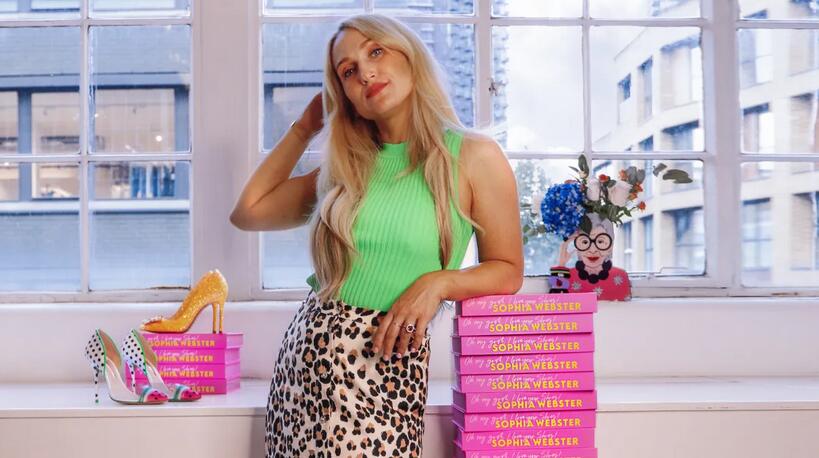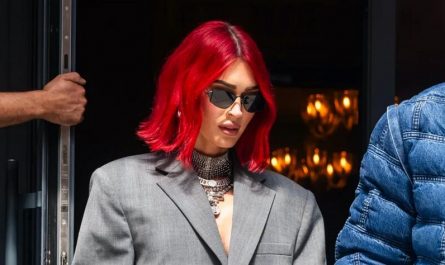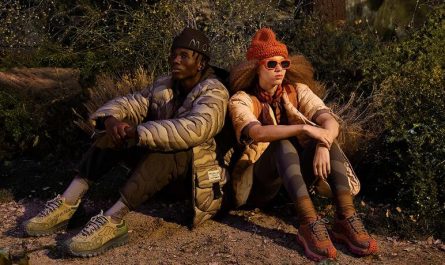Three years ago, Sophia Webster was feeling a bit at odds with the industry, and the constant demand for newness.
“I’d been thinking about my archive and all those shoes boxed up. I loved looking at all the old shoes from the past. To me, they’re still special,” said the London-based designer, who is celebrating a decade in business. “And then I thought to myself: ‘I love drawing.’ I didn’t realize how much little time I would have to spend drawing with all the pressures of running the business.”
So in the waning days of 2020, she issued a challenge to herself: Every day of 2021, she would sketch a single shoe from her vast collection — before the clock struck midnight. Webster set up a private Instagram account for family and friends to keep herself accountable, and she got to work. Some nights, the then mother of three fell asleep beside her young girls when she put them to bed and would wake up just in time to finish that day’s drawing.
“So many memories were popping up – funny stories, different dramas with the factories, funny celebrity stories. It was a roller coaster, those early years,” she recalled. “I started writing down the memories, and we thought it would make a great coffee table book. It ended up as a coffee table book/memoir.”

By the end of 2021, Webster — who oversees the brand with her husband, Bobby Stockley — had a book deal. Around the same time, she found out she was pregnant with her fourth child.
Almost two years later, the designer will release the colorful book — full of the artistic, playful details she is known for — in the U.S. this week after debuting it in the U.K. last month.
Called “Oh My Gosh, I Love Your Shoes: A Decade of Head-Turning Heels,” the book charts the designer’s journey through the 365 sketches she drew in 2021. (Webster said that “Oh my gosh, I love your shoes,” is the phrase she hears most frequently when she meets strangers.)
Webster — who last year reported $17.5 million in annual sales — doesn’t hold back when writing about her highs and lows, both professional and personal. (One of the most emotional moments in the book comes when Webster recounts the 2017 incident that left her dad with catastrophic brain injury after he was attacked in London.)

Through all the highs and lows, Webster has realized how unique it is to be part of the shoe industry.
“You’re a bit of an outsider and you can do your own thing — and stay in your own lane. I think we’ve done well to cultivate customers who have a real affinity for the brand, and who are loyal. It’s super important to have that kind of following. I’ve seen so many brands come and go.”
Here, the designer reflects on her 10-year milestone and opens up about her next chapter.
Why was it important to mark the anniversary in a big way?
“It’s hard to stop and take stock of what you’ve done and where you’re going. When it’s your name, you’re just so emotionally attached. Ten years in this climate is a real milestone. We’re in a position to rebuild in a way, and move forward. I’m not the same person. My priorities and my purpose have changed.”
What are the biggest ways the business has changed since you started?
“The brand has evolved with me. When I started, I was in my 20s. Then I got married and had [my first] baby. With the introduction of the bridal and mini [kids’] collections, it’s just grown with me. We produce in Brazil, Spain and Italy now. Our customers love the heels, but our focus now is also flats and trainers. That’s just the way the world is going. When we first started, the brand was 70 percent wholesale, 30 percent direct-to-consumer. Now it’s 55 percent DTC, and 45 percent wholesale. Bobby’s focus has always been to have our customers come to us.”

In a crowded climate, what differentiates you from the rest of the pack?
“I was an early adopter of digital. We were social media natives, and you can see that in our audience. It’s huge for a brand of our size. I think it’s because we prioritized the customer from day one. Our website’s been going for 10 years. It’s a well-oiled machine. When COVID happened, we were already experts at creating ways to engage our community. We didn’t have to pivot — it was a part of our DNA.”
What advice would you give to designers just starting out?
“I like that my story shows you can come from a completely ordinary place and do something extraordinary. When I think about the projects I did at college, I remember my final project at Cordwainers was designing red carpet collection. You had to do a customer profile. I had Beyonce, Sarah Jessica Parker and Paris Hilton [on the list]. And my teacher gave me a bit of a reality check. But I just had a belief I could do it and I could get there. That’s quite important because the fashion industry from the outside looks scary. Even from the inside, it’s scary and a bit elitist. So it’s [powerful] to see someone break through.”

Is there one big celebrity moment that sticks out?
“Rihanna wore a black-and-white optical illusion mule called Valentina in 2021. We must have sent her that shoe six years before that. I put so much love and energy into that, and the fact it stayed in her closet, I was like, ‘That’s so cool.’ It energized me even more to keep going. It affirmed what I had been thinking.”
What areas of the business are ripe for expansion?
“Bags are getting bigger for us now. That’s a big category for us. Trainers as well — we had such a huge success with Puma when we collaborated with the brand [in 2017 and 2018].”



